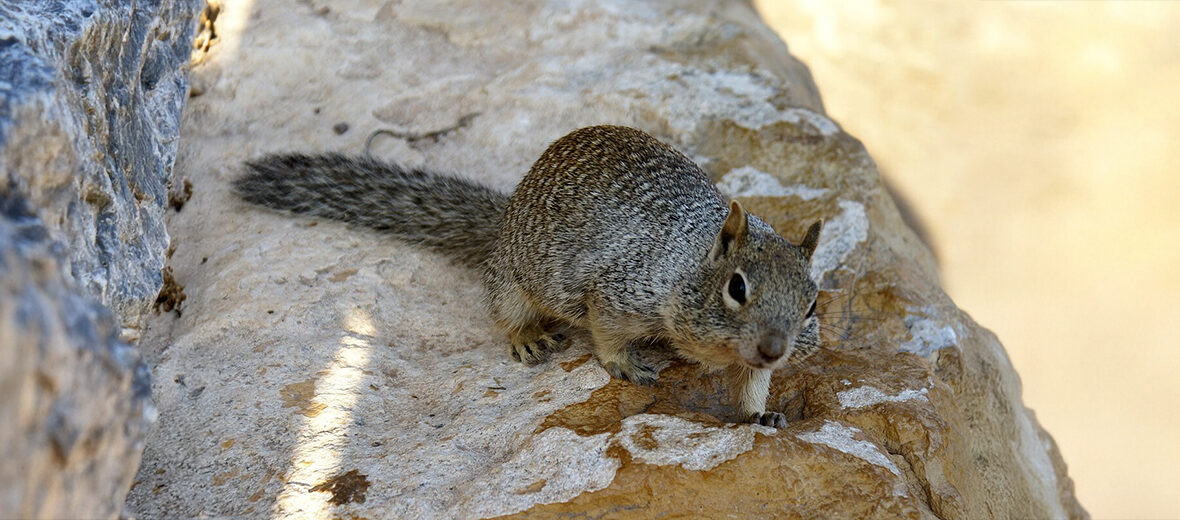
The rock squirrel, 1 of the largest members of the family Sciuridae, is native to Mexico and the southwestern United States. These rodents are a common sight in and around the Grand Canyon. They face the threats of habitat loss and destruction at the hands of residential and commercial developments; hunting; and trapping. However, they are abundant with a stable population. The IUCN lists these squirrels as Least Concern.
First the Stats…
Scientific name: Otospermophilus variegatus
Weight: Up to 1.76 lbs.
Length: Up to 21 inches, plus up to an 8 inch tail
Lifespan: Up to 10 years
Now on to the Facts!
1.) These squirrels are diurnal (active during the day).
2.) If the temperatures get too hot, they tend to estivate (enter into a state of dormancy).
3.) They are social and gather into drays of several females and a single male.
4.) The single male squirrel fights other adult males for breeding rights to his harem of females.
5.) Rock squirrels dig burrows that are used for safety from predators, for food storage, and rearing their young.
But wait, there’s more on the rock squirrel!
6.) Their burrows are usually lengthy and complex with a hidden entrance. They are made ever larger over the years.
7.) Females undergo up to a 30 day gestation (pregnancy) that yields up to 9 pups, 2 times a year.
Did you know…?
These squirrels can go long periods of time without drinking water, some even go up to 100 days!
8.) The 1st litter is typically born from April – June, while the 2nd is born in August – September.
9.) When startled or alarmed they will produce a short, sharp, oscillating call, then retreat to their burrows.
10.) Acorns, pine nuts, various fruits of native plants, various grasses, mesquite, juniper berries, agaves, cacti, leaves, stems, seeds, grasshoppers, beetles, earthworms, young wild turkeys, other fowl, and even the carrion (dead animals) of their own dead are all on the menu.
But wait, there’s still more on the rock squirrel!
11.) Their buccal pouches (cheek pouches) are capable of holding copious amounts of food items. 1 researcher discovered that a rock squirrel had 62 Gambel’s oak acorns stuffed in its pouches!
12.) Foraging treks are quick and typically only last upwards of 12 minutes at a time.
Did you know…?
Rock squirrels can emit a musky scent from their anal glands when threatened by predators.
13.) Badgers, birds of prey, bobcats, domestic and feral cats, coyotes, domestic dogs, gray foxes, raccoons, ringtail cats, and snakes all prey on these squirrels.
14.) When threatened by a snake, they will make erratic movements, and even throw rocks at the snake to thwart its attacks. This is called mobbing.
15.) They typically feed, rest, and sunbathe in trees, high rocks, and tree stumps so they can have the high ground in order to look out for predators.
Now a Short Rock Squirrel Video!
Be sure to share & comment below! Also, check out the Critter Science YouTube channel. Videos added regularly!

Want to suggest a critter for me to write about? Let me know here.
Some source material acquired from: Wikipedia & IUCN
Photo credit: Toffel



